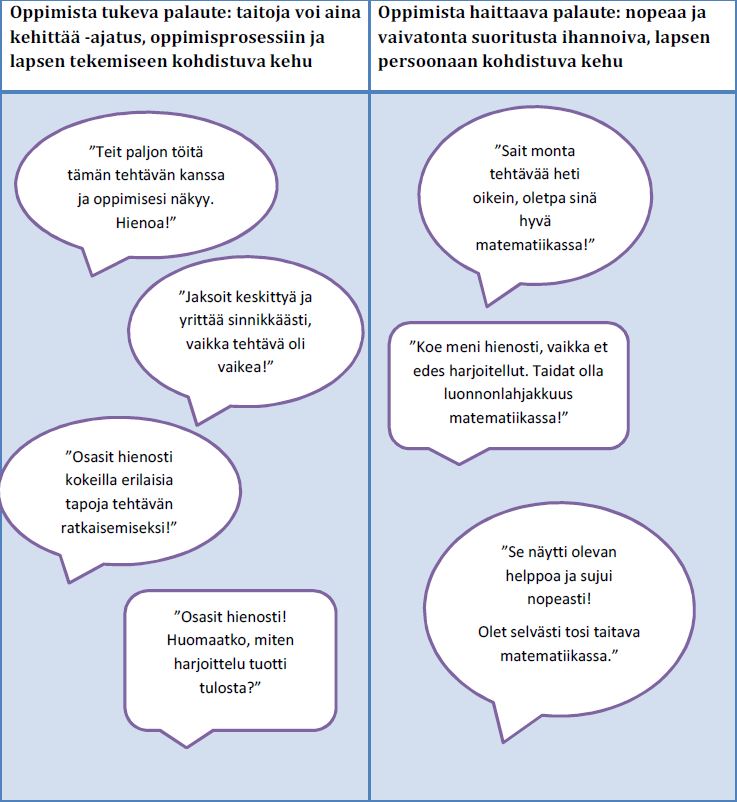Seuraavassa kuvataan konkreettisten ilmaisujen avulla sitä, mitä lapselle annettu suullinen palaute voi käytännössä tarkoittaa. Esimerkit pohjautuvat tutkimuksiin, joissa vastaavanlaisen palautteen vaikutuksia lasten tunteisiin, reaktioihin, tehtävätyöskentelyyn ja suoriutumiseen on tutkittu muun muassa kokeellisten asetelmien avulla.
Lähteet
- Blackwell, L., Trzesniewski, K., & Dweck, C. S. (2007). Implicit theories of intelligence predict achievement across an adolescent transition: A longitudinal study and an intervention. Child Development, 78, 246–263.
- Dweck, C. (2008). The perils and promises of praise. Best of Educational Leadership 2007-2008, 65, 34-39.
- Cimpian, A., Arce, H.-M. C., Markman, E. M., Dweck, C. S. (2007). Subtle linguistic cues affect children’s motivation. Psychological Science, 18, 314-316.
- Craven, R. G., Marsh, H. W., Debus, R. L. (1991). Effects of internally focused feedback and attributional feedback on enhancement of academic self-concept. Journal of Educational Psychology, 83, 17-27.
- Kamins, M.L., & Dweck, C.S. (1999). Person versus process praise and criticism: Implications for contingent self-worth and coping. Developmental Psychology, 35, 835–847.
- Mueller, C. M., & Dweck, C. S. (1998). Praise for intelligence can undermine children’s motivation and performance. Journal of Personality and Social Psychology, 75, 33–52.
- Zentall S. R. & Morris, B. J. (2012). A critical eye: praise directed toward traits increases children’s eye fixations on errors and decreases motivation. Psychonomic bulletin & review, 19 (6), 1073-7.


